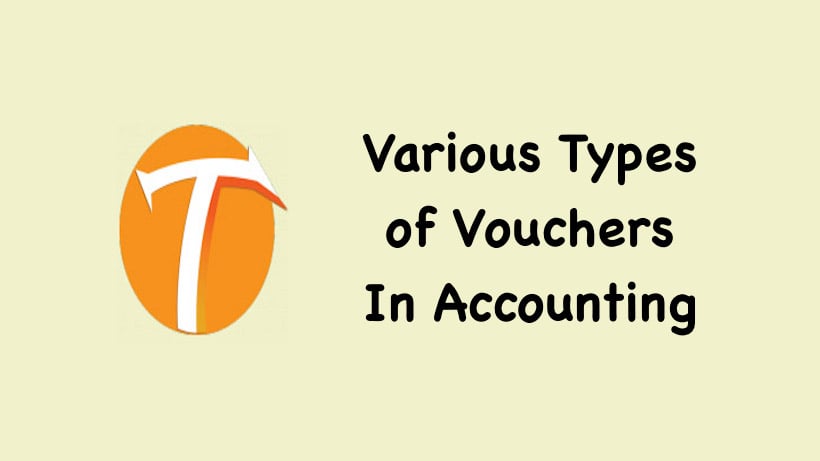Various Types of Vouchers In Accounting, Be it vouching or passing an entry or maintaining regular books of accounts, the knowledge of vouchers and its types is very important. You must know what a voucher is and what are the various types of vouchers. So, let us have a look on the same.
Accounting Voucher: These vouchers are prepared on the basis of supporting vouchers by the accountant of the company and which are countersigned by an authorized signatory. As soon as it is signed the same is recorded in the books of accounts.A document that serves as evidence of a business transaction is called aVoucher. Sometimes, mistakenly taken as just a bill receipt, avouchercan actually have any form.
Various Types of Vouchers In Accounting
Avoucheris an accounting document used by a company’saccountspayable department to gather and file all of the supporting documents needed to approve the payment of a liability. Thevoucheris an internalaccountingcontrol, which ensures that every payment is properly authorized.
What is a Voucher?
The definition of a voucher says that it is a written instrument that serves to confirm or witness (vouch) for some facts such as a transaction.
Advertisement
Content in this Article
Commonly, a voucher is a document that shows goods that have been bought or services that have been rendered, or it authorizes payments and indicates the ledger account (s) in which these transactions have to be recorded. For example, if you are paying an electricity bill in cash, the two ledgers involved will be power expenses and cash. A payment voucher crediting the cash account and debiting the PandL Account will be passed in this case.
What are the various types of Vouchers?
Normally the following types of vouchers are used:
- (i) Receipt Voucher
- (ii) Payment Voucher
- (iii) Non-Cash or Transfer Voucher or Journal Voucher
- (iv) Supporting Voucher
Must Read –How to Finalize Balance Sheet
Let us have a detailed look on each of these:
( i ) Receipt Voucher:
A Receipt voucher is used to record cash or bank receipt. Receipt vouchers are of two types which are as follows:
(a) Cash receipt voucher – it denotes receipt of cash in hand.
(b) Bank receipt voucher – it indicates receipt of a cheque or demand draft i.e. money is not received in the form of cash in hand, instead, the money will be credited to the bank account of the assessee.
(ii) Payment Voucher:
A payment voucher is just the opposite of a cash voucher. In the above, cash/ bank was debited, while in this case, cash or bank will be credited. In the above case, there was an inflow of funds, while in this case, there is an outflow of funds. A Payment voucher is used to record a payment of cash or cheque. Payment vouchers are also of two types which are:
(a) Cash Payment voucher – it denotes payment of cash
(b) Bank Payment voucher – it indicates payment by cheque or demand draft i.e. money is not paid in the form of cash in hand, instead, the money will be debited from the bank account of the assessee
(iii) Non Cash Or Transfer Voucher or Journal Voucher:
These vouchers are used for non-cash transactions, they are basically used as a documentary evidence. e.g., Goods sold on credit. In such cases, the cash or the bank account of the assessee is unaffected. In the case of Goods sold on credit, the Voucher would debit the Debtor to whom the goods are sold on credit, while sales on credit account would be credited further.
( iv ) Supporting Vouchers:
These vouchers are the documentary evidence of transactions that have happened. For example, you can attach the bill of an expense along with the original voucher just to further support the primary voucher. Petrol Bills attached with the conveyance vouchers are a good example of Supporting Vouchers.
Must Read –


Well done, but aside the once you’ve mention, some writers insisted that there more other ty*es of vouchers. Whats ur view about this?
Kindly provide details how to audit imported bill transaction including foreign exachange profit and loss transaction.
it was very helpful for ug students thanks
itwas helpful for ug students
That was very helpfull
Thanks